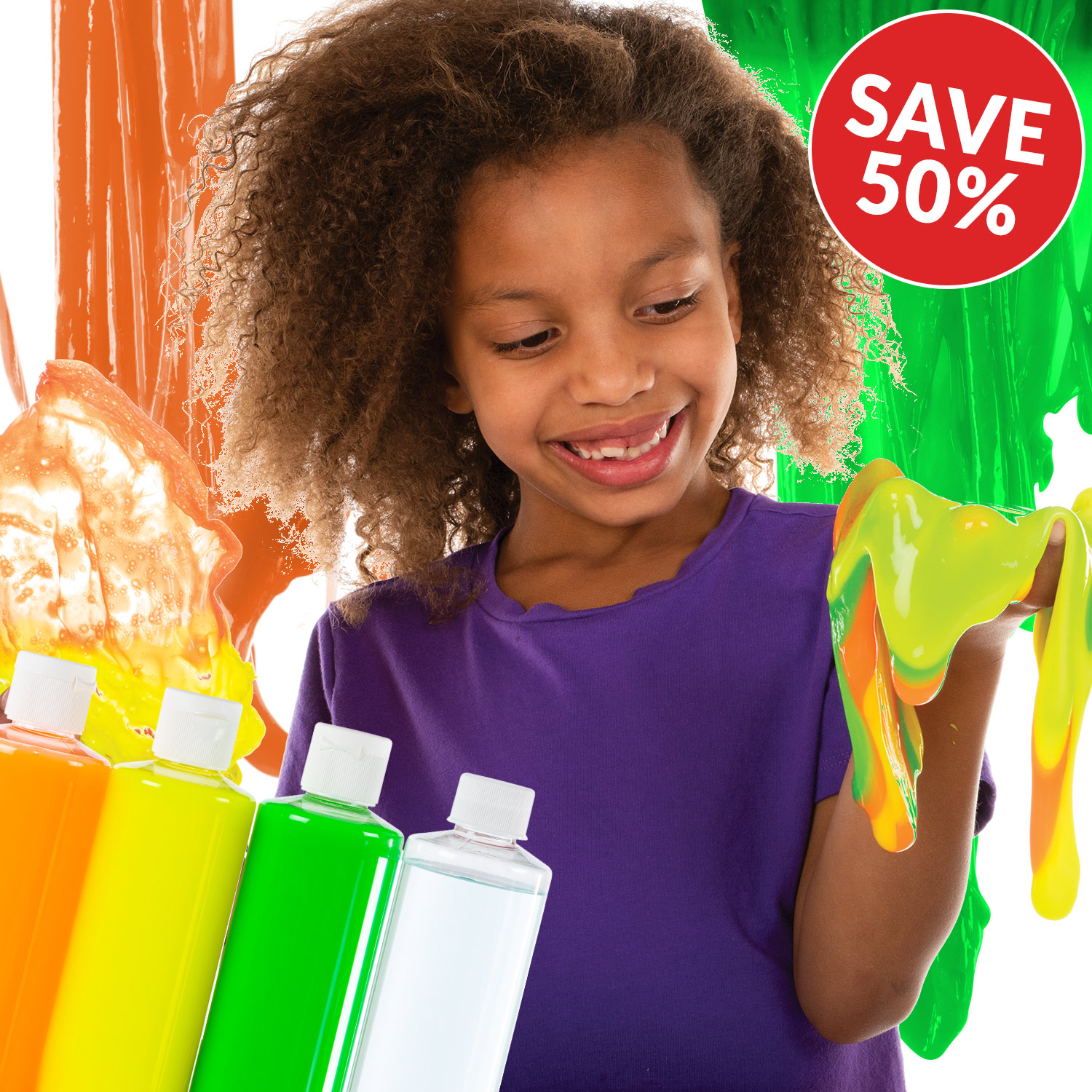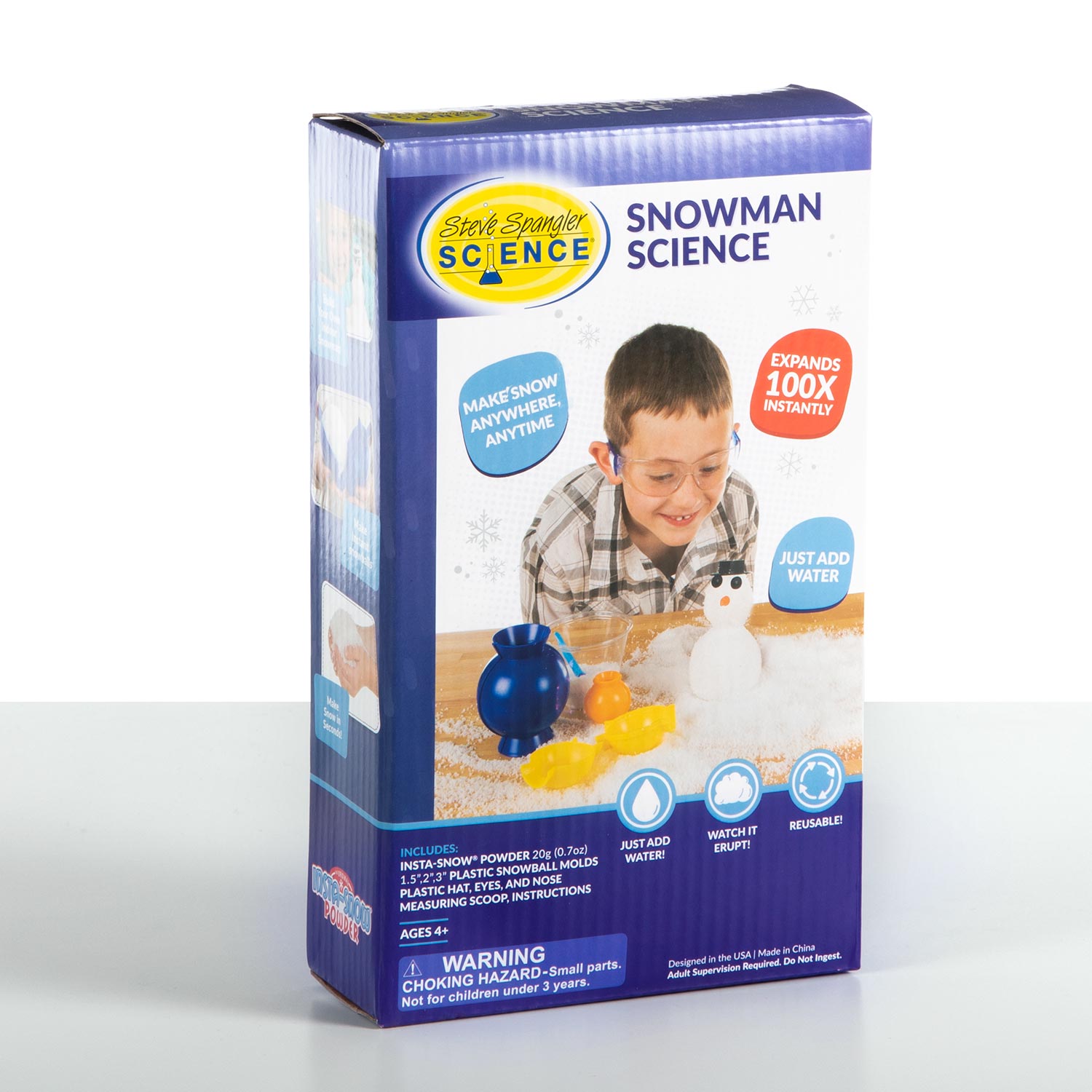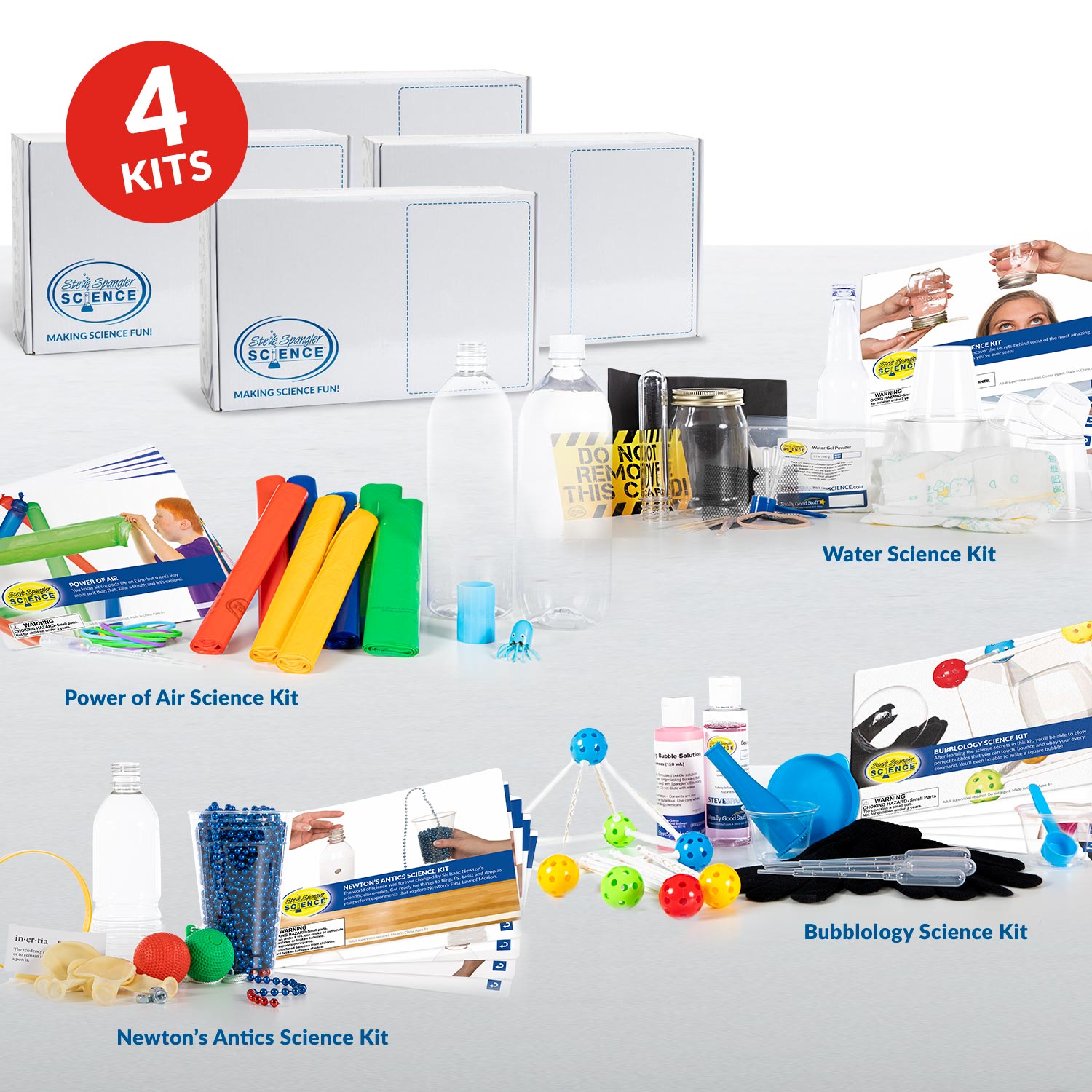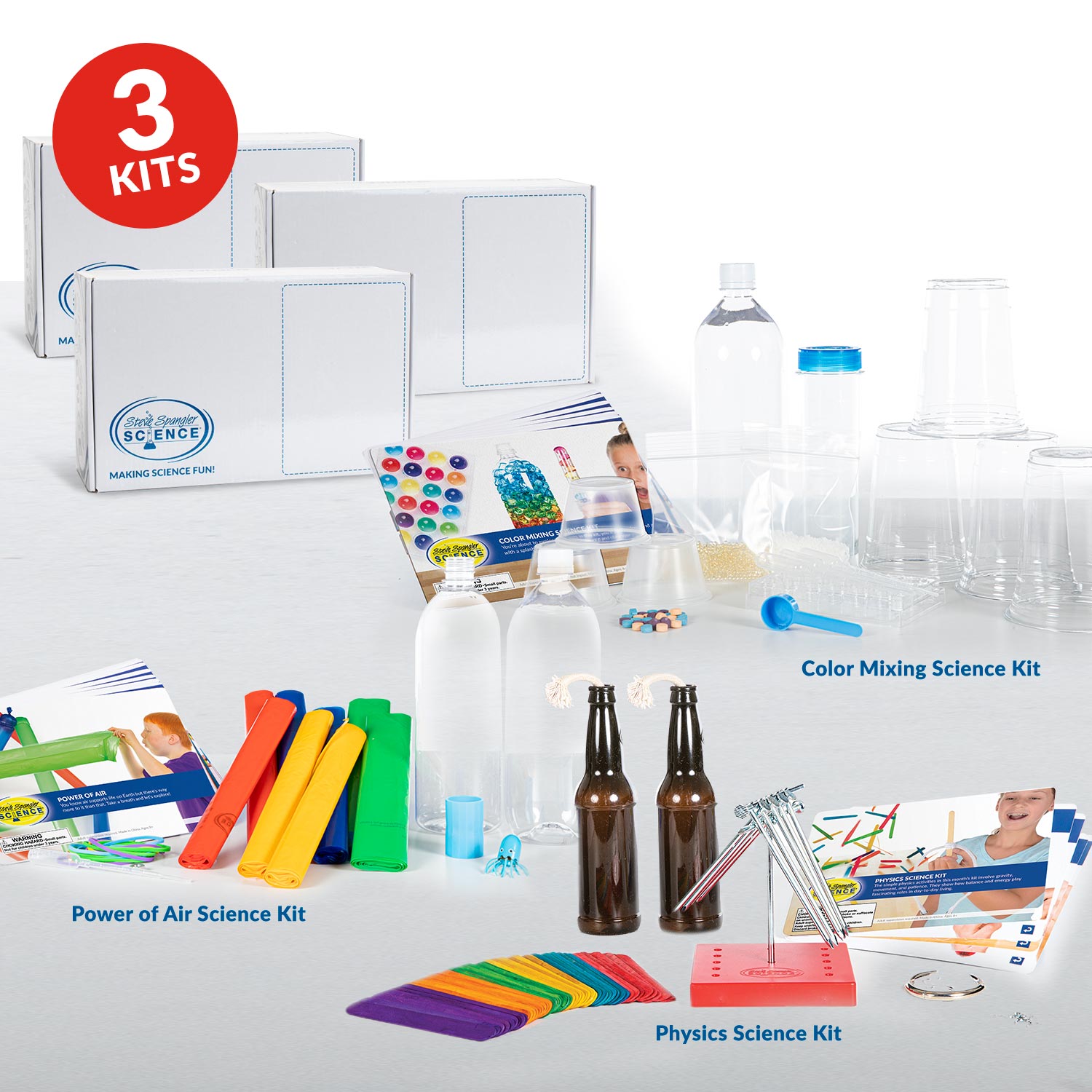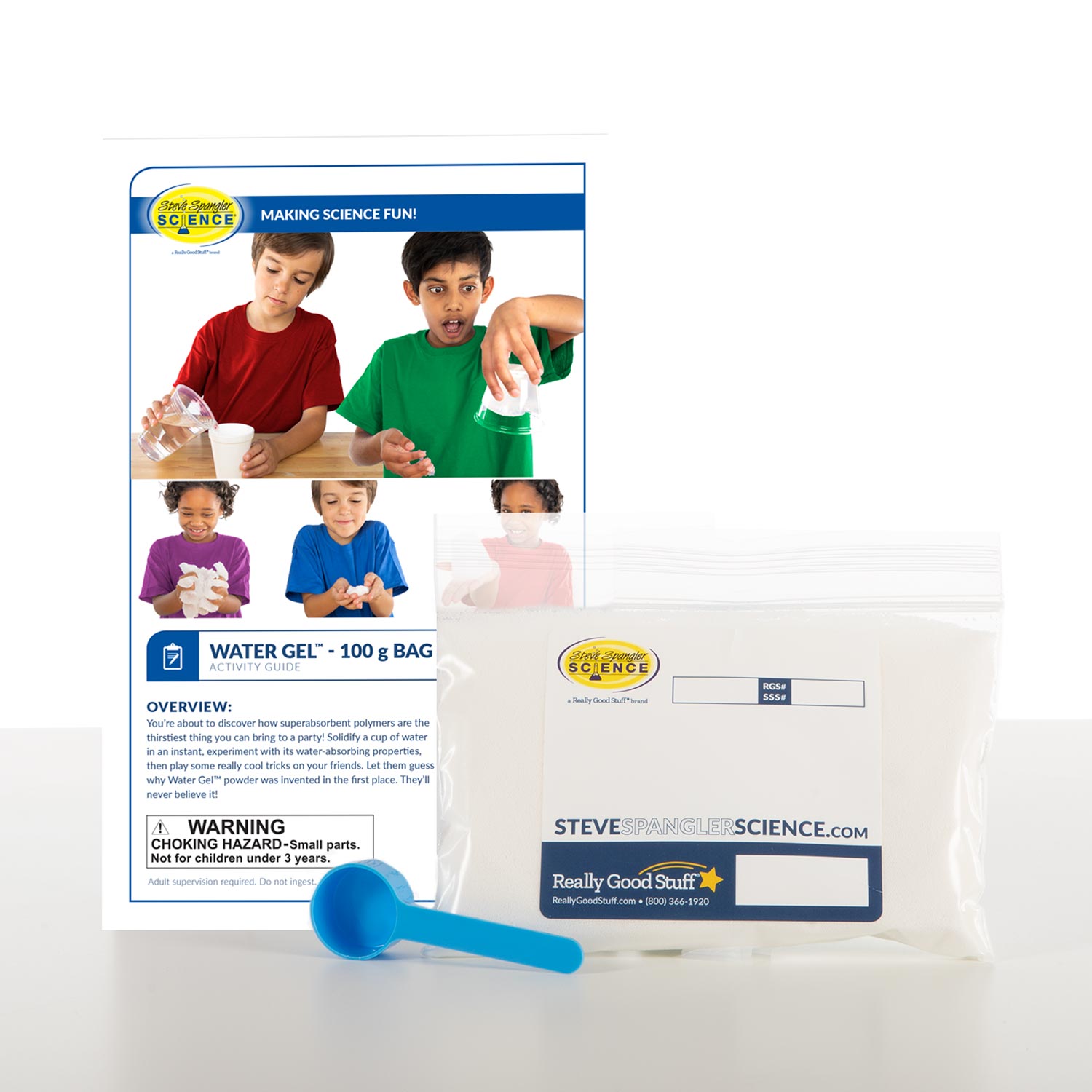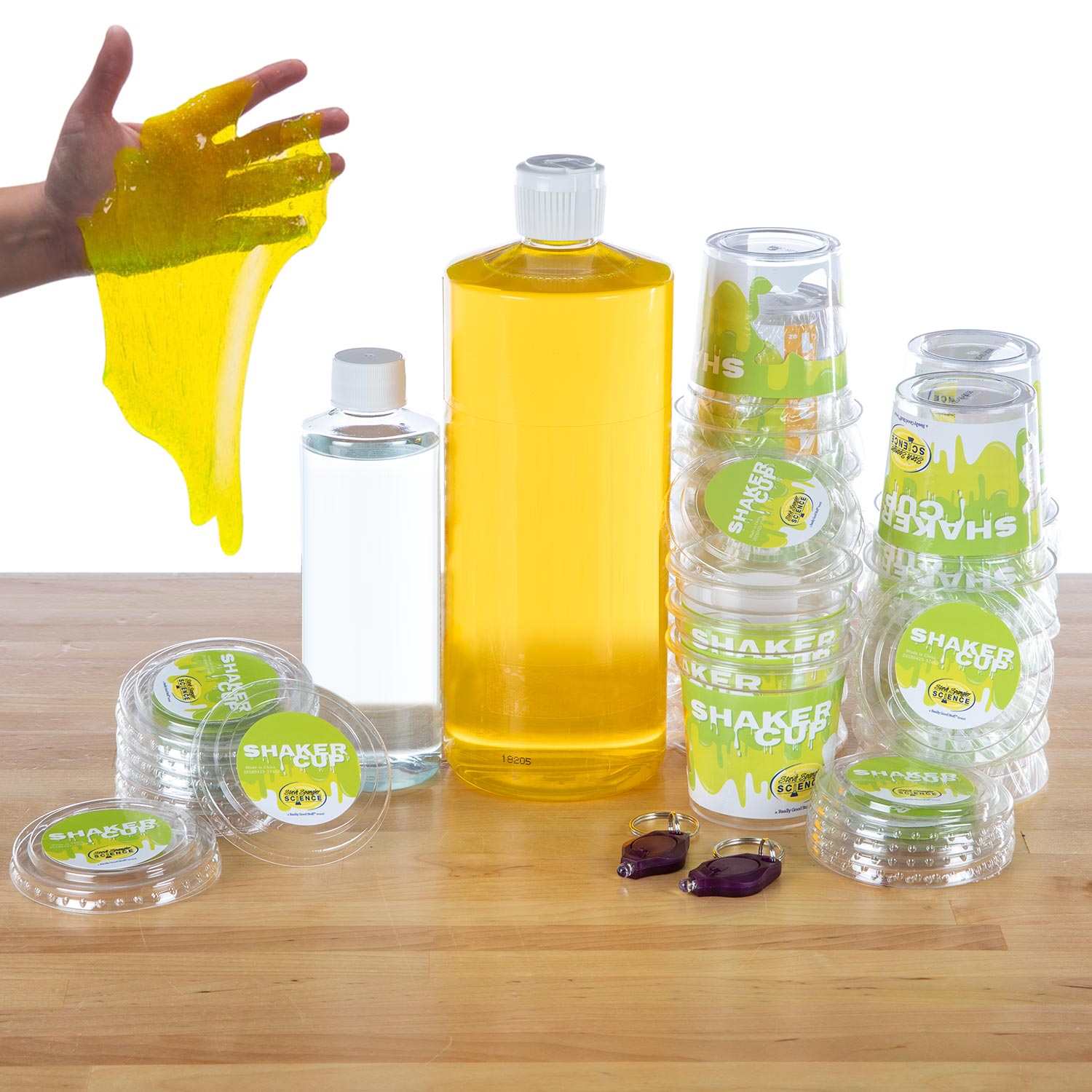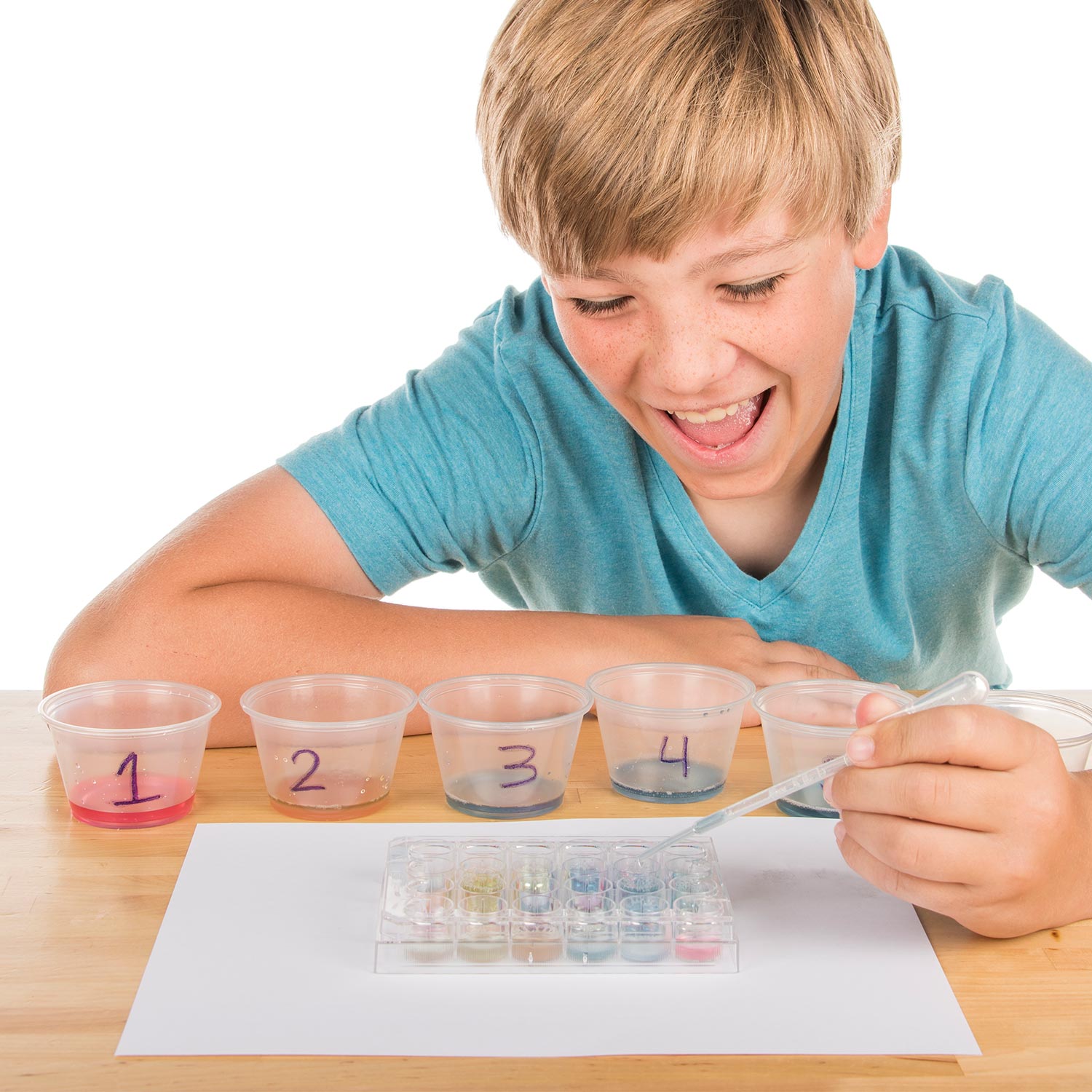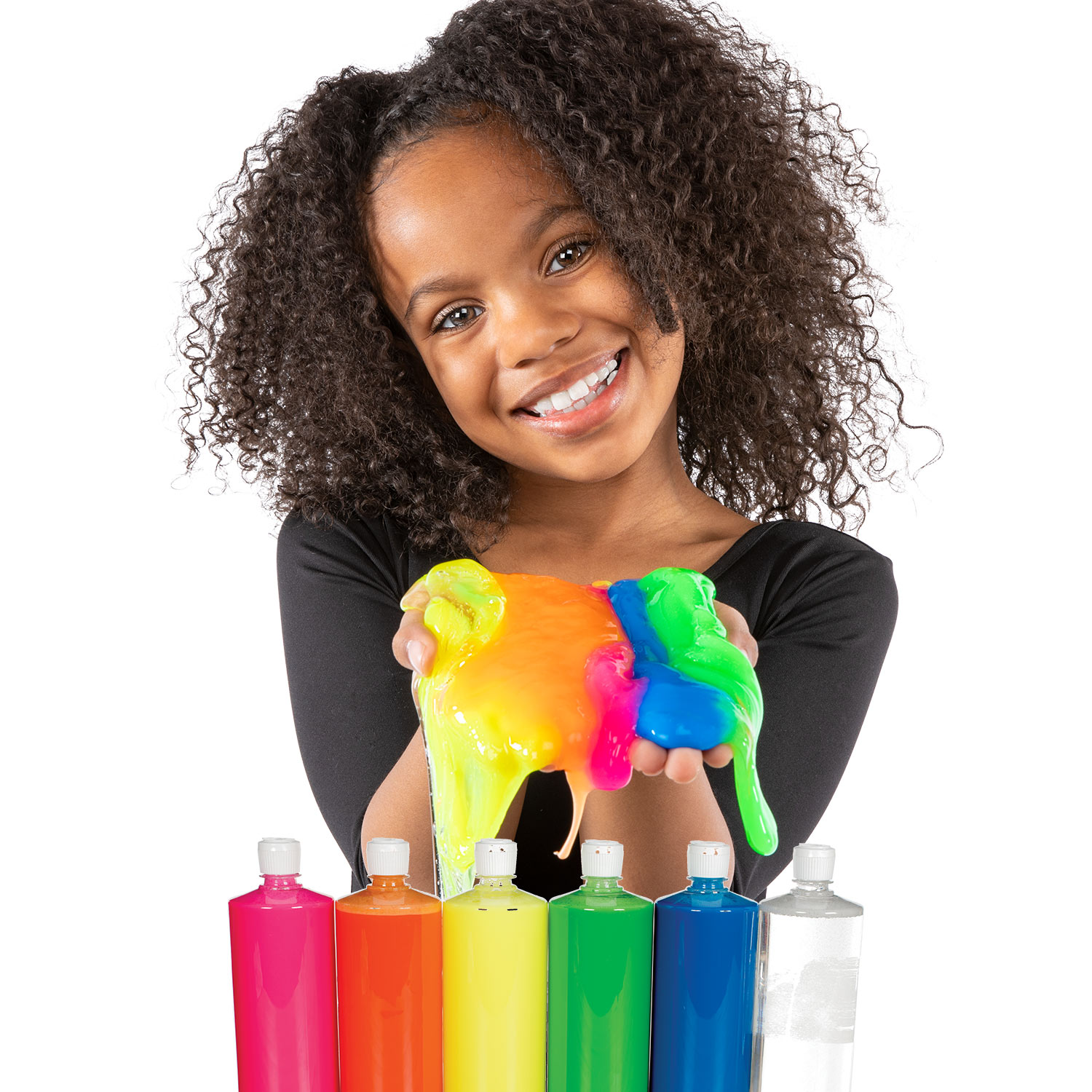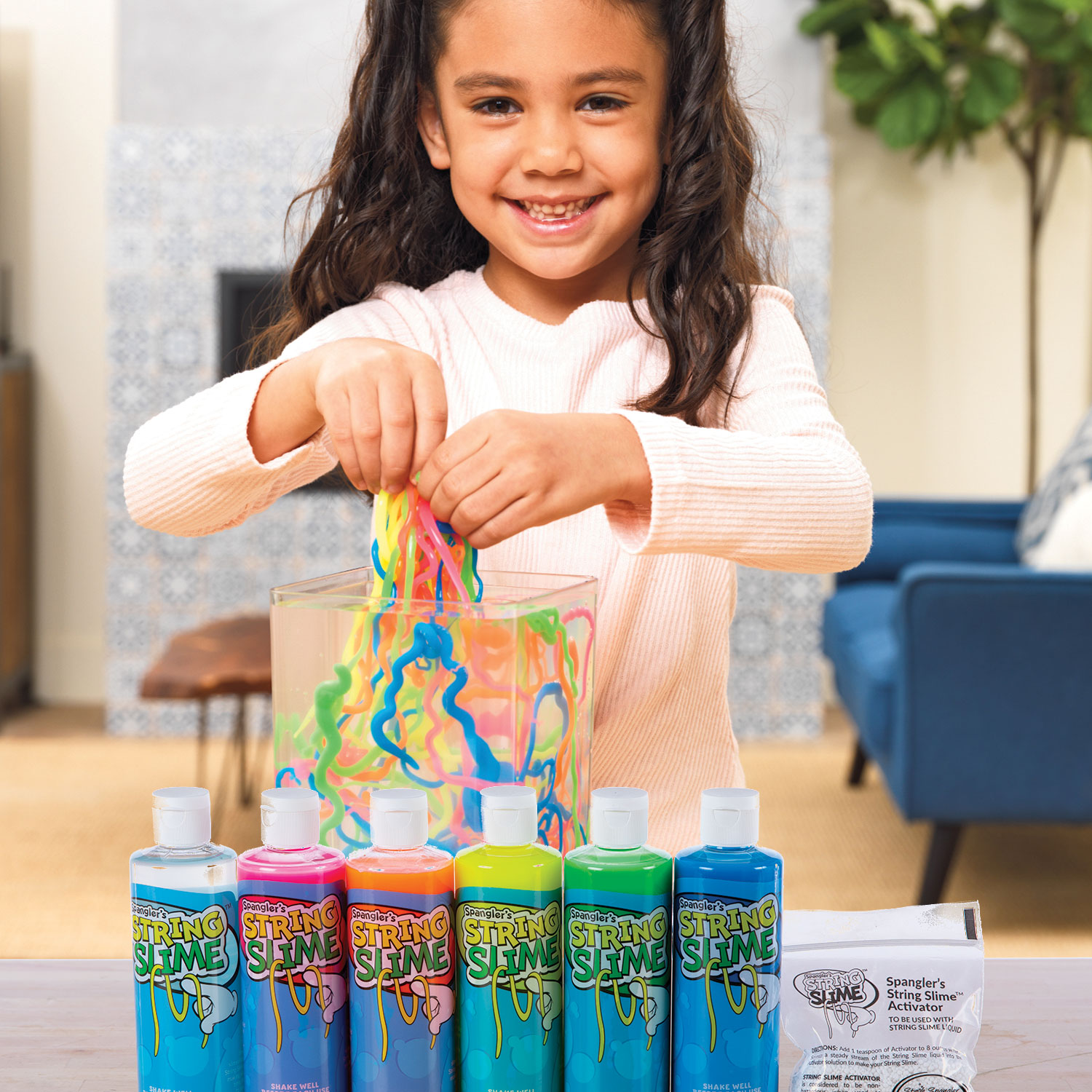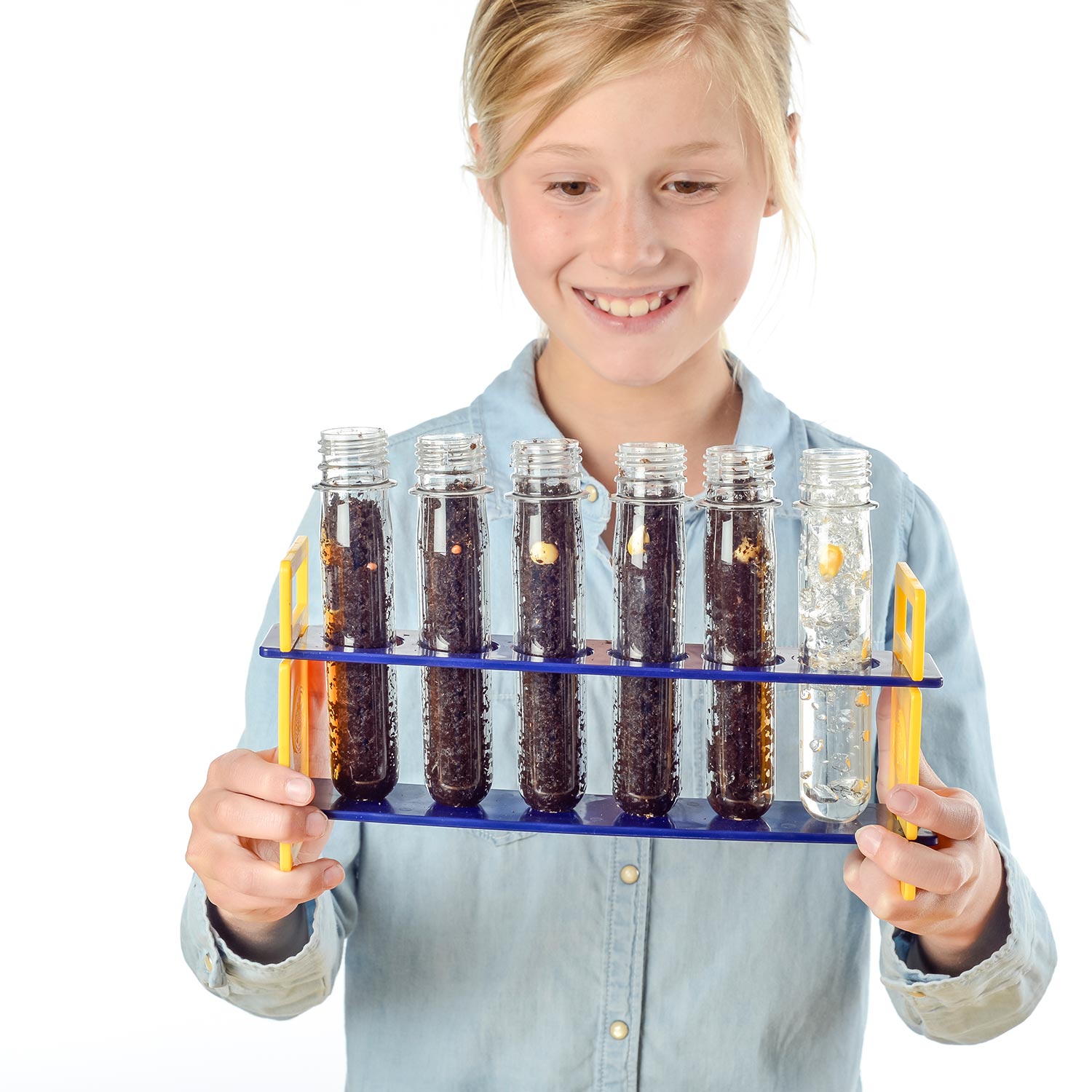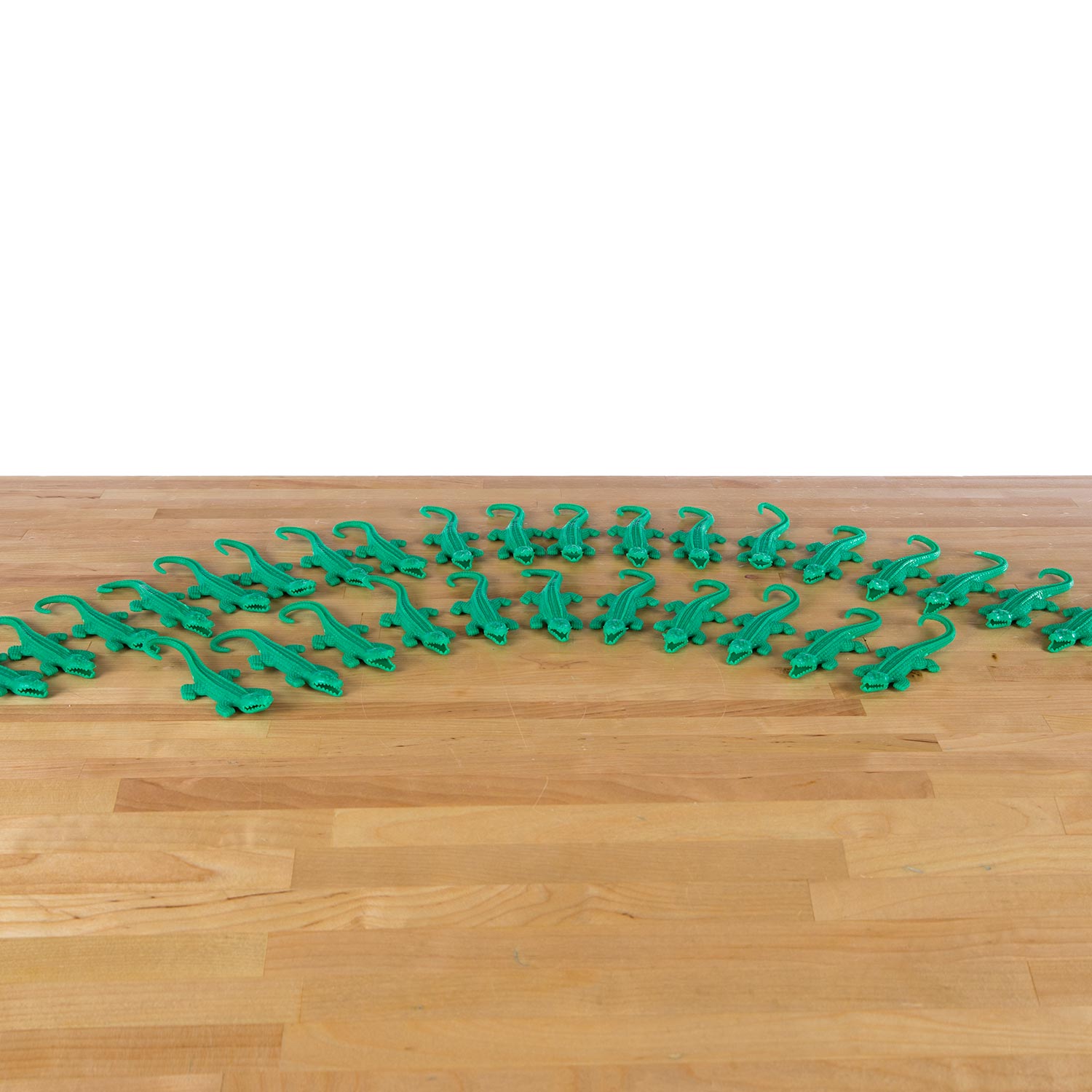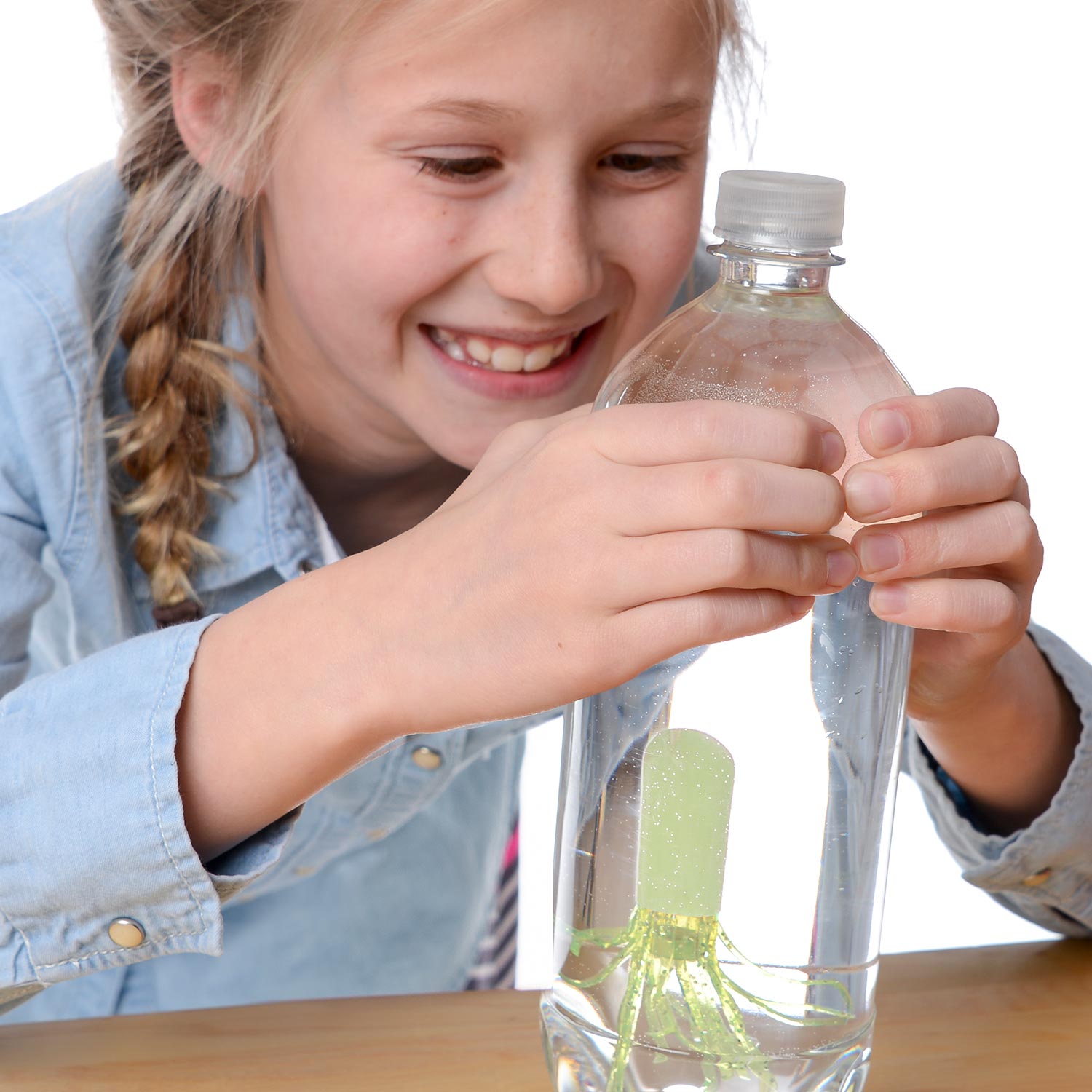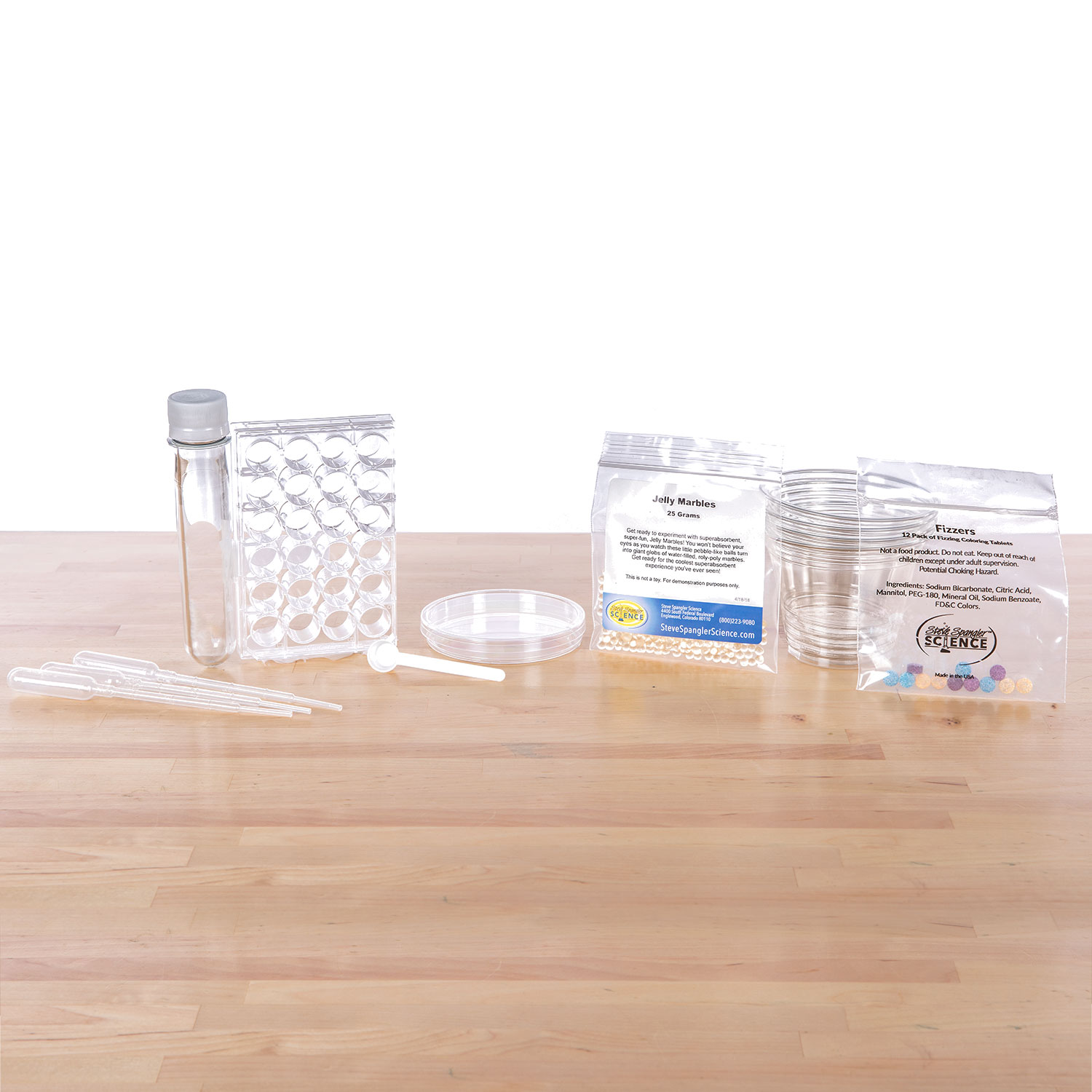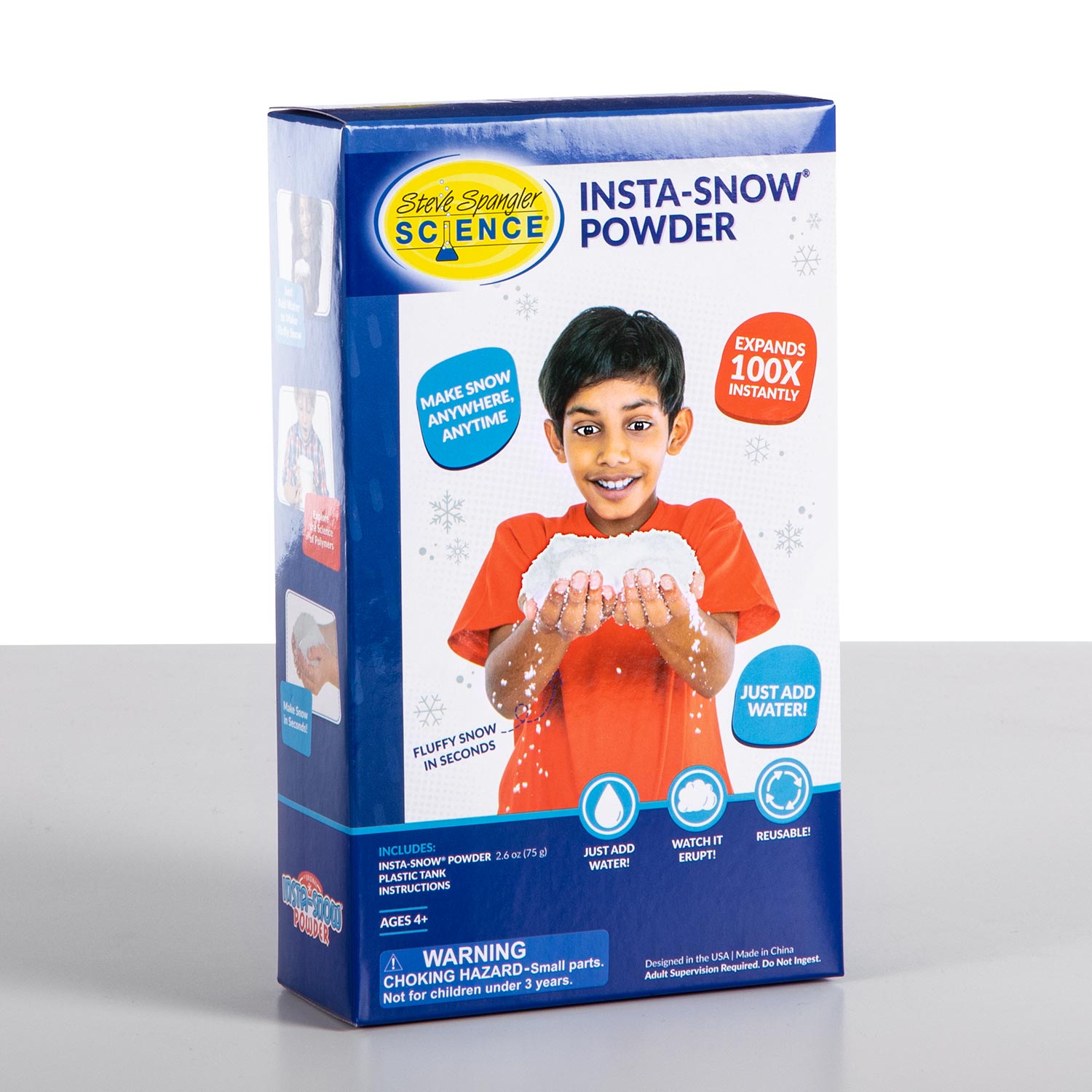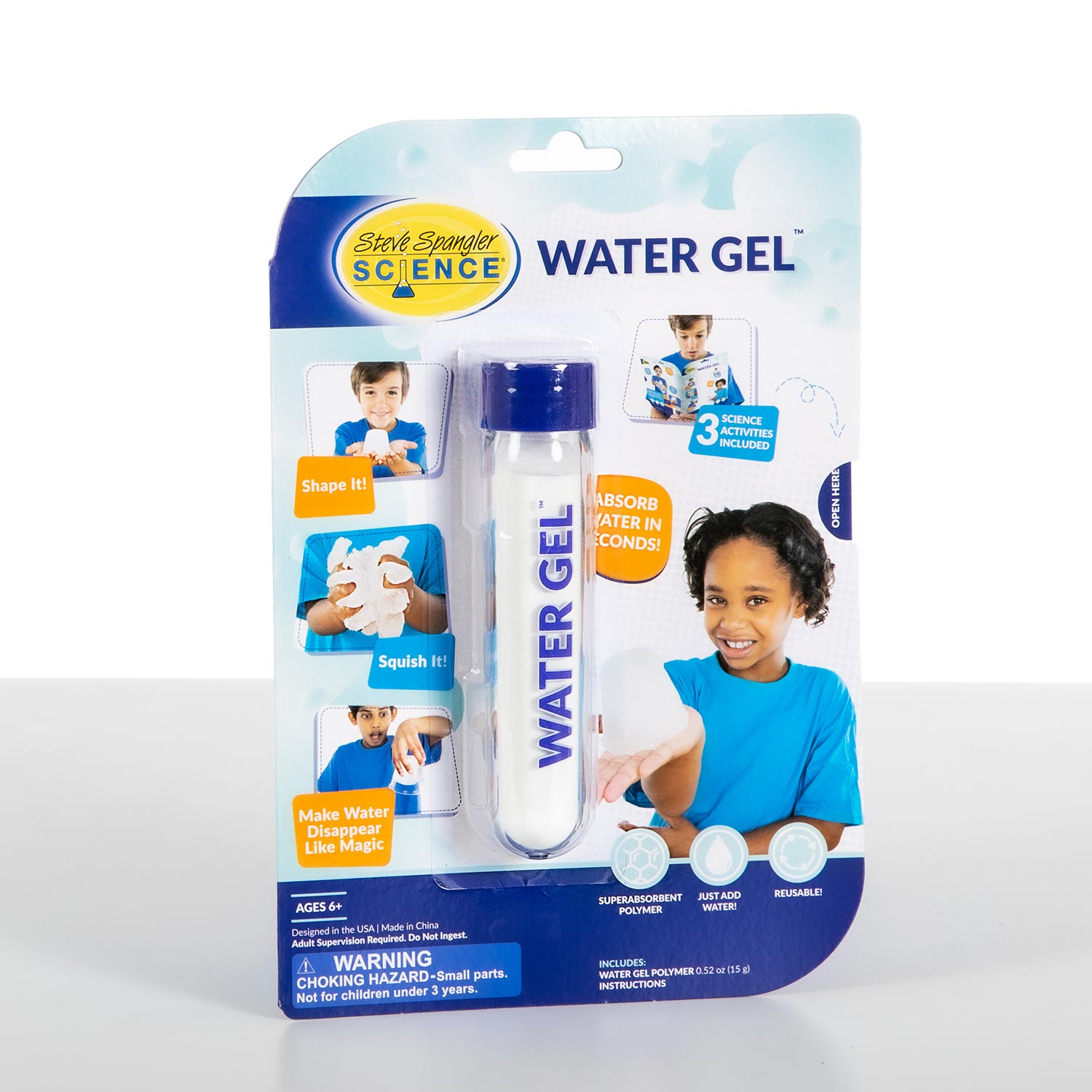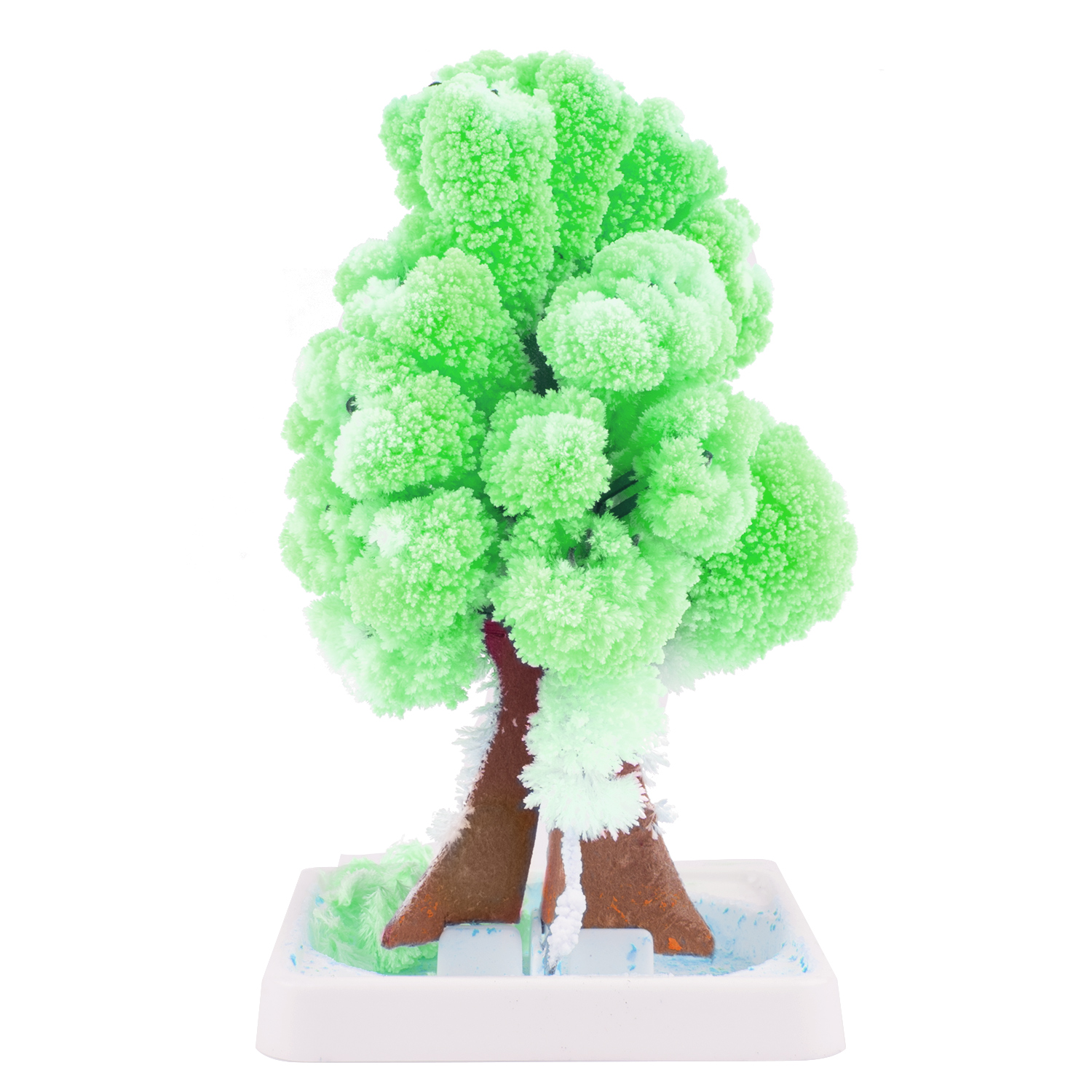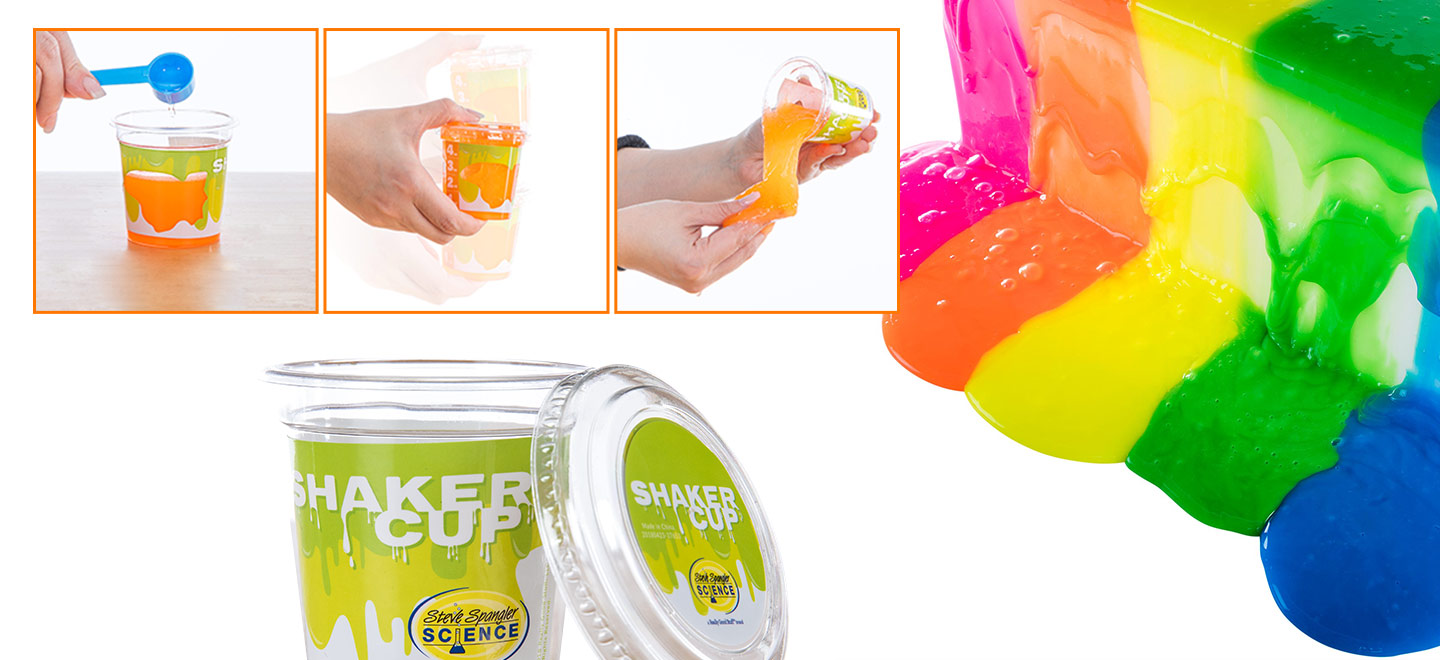
How to Make Slime – At-Home Slime Experiment
Borax Slime Recipe Without Glue
Better Than Glue — It’s Shaker Slime
The best slime is made when it’s shaken, not stirred.
Making slime is super easy if you have the right slime recipe — too much or too little of either solution and you’ll just get clumpy water. But with the Shaker Slime Cups from Steve Spangler Science, you’ll make a perfect batch of slime every time.
Experiment Materials
- Slime Goo
- Borax powder
- Water
- Color Fizzers
- Shaker Cups and Lids
- Blue measuring scoop
- Adult supervision
Experiment
1
Measure 1 cup of warm water and pour it into the Shaker Cup or a large, plastic cup with a lid.
2
Add 1 tablespoon of borax powder to the water.
3
Stir the solution. Don’t worry if all of the powder dissolves. This borax solution is the secret linking agent that causes the PVA molecules to turn into slime.
4
Measure 2 ounces (60 milliliters) of the clear Slime Goo solution into the plastic cup. You’ll see markings on the side of the cup to indicate ounces.
5
Add 1 ounce (30 milliliters) of the borax solution to the Slime Goo in the cup.
6
This last step is the most important one. It’s time to shake — once you’ve sealed the Shaker Cup with its lid, of course. Once it’s sealed, go ahead and shake. Don’t stop shaking for at least one minute.
7
Take a look at the liquid in the cup and you’ll be amazed to find that it’s transformed into a big ball of slime.
8
If you want to make larger portions, just increase the proportions. To make 4 ounces (120 milliliters) of slime, you can double the borax solution. It’s as simple as that.
How Does It Work
Most liquids, such as water, are made up of small, unconnected molecules bouncing around and tumbling over and into one another. These single, unconnected molecules are called monomers. Monomers flow easily and don’t tend to be gooey or sticky. When monomers are linked together in long chains of molecules, they are known as polymers. These long chains don’t flow easily at all and tend to be a lot gooier, moving more slowly than monomers. The Goo solution you used to make slime is called polyvinyl alcohol (PVA), a common liquid polymer.
PVA is used by the plastics industry to form surface coatings and to make surface films resistant to gasoline. It’s also found in artificial sponges, hoses and printing inks. PVA is often used as a lubricant and cleanser, so if you check out the ingredients of your contact lens solutions, you may find PVA listed on the label. The PVA solution in this kit contains coloring and a special disinfectant, so your polymer slime looks cool and lasts for a long time.
The borax solution you made in the beginning of the experiment is called sodium tetraborate. Your parents or grandparents may have used a powdered soap with borax to whiten linen or to deeply clean their hands. While some people still use borax in their laundry or around the house, it’s also used to make slime. When making slime, the sodium tetraborate molecules act to cross-link the long strands of PVA molecules. Just imagine a box full of tiny, steel chains that slip and slide easily across one another. Each chain is made up of hundreds of individual links, but the chains are not connected to each other. Borax loves to connect with water. In this experiment, billions of borax molecules link trillions of water molecules found within the chains of PVA. When you pull out one PVA chain, the rest comes with it in a big blob because the borax is linking the molecules together.
You can customize your slime recipe by adding food coloring, glitter and small objects before you begin shaking. The mix-ins get trapped in the web of PVA chains, giving your slime a unique look. What other kinds of fun slime ingredients can you think to include to add your own special touch?



